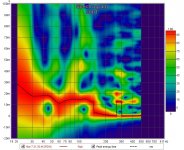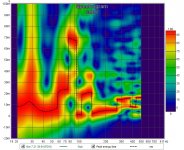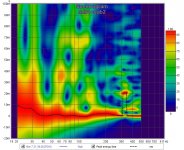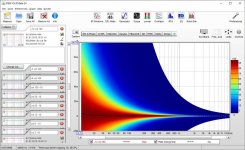Ie, it didn't add destructively....Ie: the direct sound did not change, but the different reflections will sum up constructively/destructively differently at different locations - and it seems that with the windows open it added constructively at the one listening position measured.
Best,
Tal
B.
Yeah so the at best, 3/8" thick piece of glass that is at best, 2 square feet in surface area was making the 90 something dB 50 foot bass wave bounce off of it enough to change the response at the LP significantly.
It must have been that transparent aluminum stuff from Star Trek where they saved the whales. 🙄
It must have been that transparent aluminum stuff from Star Trek where they saved the whales. 🙄
I'd vote for multiple smaller subs running in mono. Here are some spectrograms not to be fully subjective.
Two subs are located in corners of the front wall. Single subs give the following picture:


If you're not familiar with spectrograms, these type of charts show if every note is playing at the same time and how fast they are fading. Ideal spectrogram will look like this:

Every note is playing at the same time and immediately disappears. Red zone becomes wider towards the lower notes because lower notes have longer waves.
Running two in mono mode with a delay for one of them, gives much smoother bass response:

Third sub make the spectrogram is little bit better.
Two subs are located in corners of the front wall. Single subs give the following picture:
If you're not familiar with spectrograms, these type of charts show if every note is playing at the same time and how fast they are fading. Ideal spectrogram will look like this:
Every note is playing at the same time and immediately disappears. Red zone becomes wider towards the lower notes because lower notes have longer waves.
Running two in mono mode with a delay for one of them, gives much smoother bass response:
Third sub make the spectrogram is little bit better.
Attachments
Last edited:



